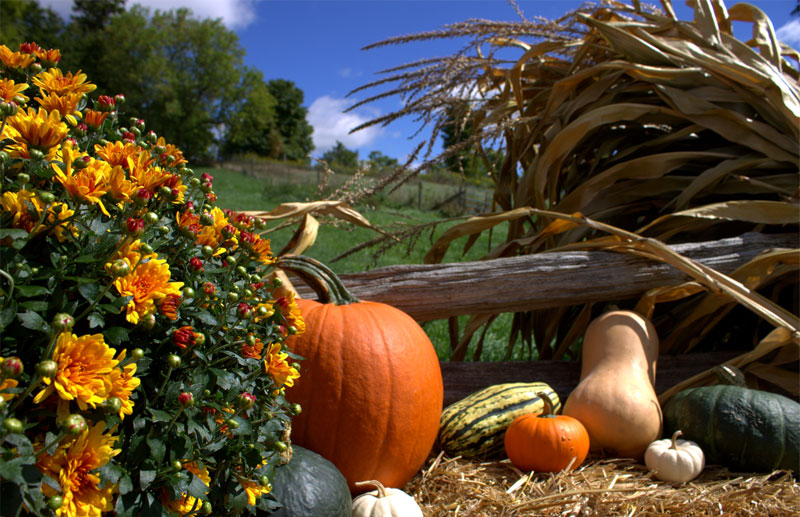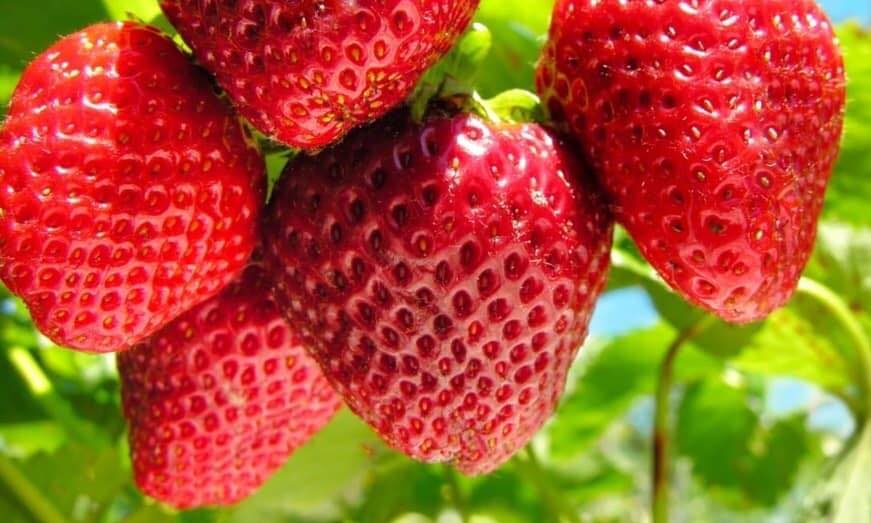
The summer season is nearing the end. Many of us have enjoyed tasty vegetables that we grew this year or have purchased at local farmers’ markets. But with Fall, it doesn’t mean that’s the end of local vegetables and fruit. Here’s what I harvest in September or later.
Beans
 There is nothing like a serving of fresh beans from the garden. Did you know that not all varieties of beans we grow have to be eaten young and fresh? Climbing or pole beans and pea beans are left to mature on the plants. These types of beans are harvested in the fall when their pods swell, are dry and the beans rattle inside the pod. After being shelled, they can be spread out to dry more, then put in sealed containers for keeping. These are great to toss into soups or stews over the winter!
There is nothing like a serving of fresh beans from the garden. Did you know that not all varieties of beans we grow have to be eaten young and fresh? Climbing or pole beans and pea beans are left to mature on the plants. These types of beans are harvested in the fall when their pods swell, are dry and the beans rattle inside the pod. After being shelled, they can be spread out to dry more, then put in sealed containers for keeping. These are great to toss into soups or stews over the winter!
Late-varieties
Throughout the summer we have been harvesting vegetables as they mature. Did you know there are also late-varieties of many vegetables? ‘Late’ varieties mean they take more days to grow and mature before they are harvested in the fall. For instance, we can plant late-season types of cabbage, cauliflower and broccoli which will be ready in the fall; generally with better-tasting produce than plants ripened during the summer heat. Brussel sprouts are an example of a vegetable that takes a long time to grow and mature. It typically isn’t harvested until after a couple of frosts.
Cool-season Crops
Kale has become a popular and easy vegetable to grow in our gardens. Throughout the summer the leaves are picked to be enjoyed in salads, smoothies etc. Kale is a ‘cool season’ crop and will withstand frost in the late fall. Matter of fact, these hits of frost will sweeten the leaves.

Most of our root crops such as beets, carrots, onions, and potatoes are ready to harvest in September. However, many of these can be left in the ground until October, November or even later. Check out some ways to extend the harvest throughout most of the winter.
Rutabagas are harvested in the fall after they have been exposed to frost. Parsnips, another root crop, also benefit from a heavy frost that will improve and sweeten the flavour.
Summer squash is harvested from July through September but winter squash should still be on the vine for a while longer. The difference between summer and winter squash is the skin. Summer squash, such as zucchini, pattypan, yellow or crookneck etc, are harvested before they are fully mature and are eaten with the skin is tender and full of flavour. Winter squash such as butternut, acorn, buttercup, delicata etc are picked when the fruit is mature, and the rind is hard and can be stored for winter. These will be ready to harvest in September but can be left into October. Don’t leave them too late though – a hard freeze may damage the skin and affect storage.
Fruit
 Seeing the ripening apples on the trees reminds me that it’s Back-to-School time. Who doesn’t like a crisp sweet apple in the Fall? So many delicious apples are grown in this region. Old favourites such as Cortland, Empire, Spartan, and Idared are great for snacking and cooking. Varieties such as Royal Gala, Fuji and Honeycrisp have become increasingly popular with many families. Depending on the variety, the apple harvest usually is from mid-September well into late October. There are lots of ways to use apples. Other fruits such as grapes, pears and plums are grown in this region and ready for harvest in September or beyond.
Seeing the ripening apples on the trees reminds me that it’s Back-to-School time. Who doesn’t like a crisp sweet apple in the Fall? So many delicious apples are grown in this region. Old favourites such as Cortland, Empire, Spartan, and Idared are great for snacking and cooking. Varieties such as Royal Gala, Fuji and Honeycrisp have become increasingly popular with many families. Depending on the variety, the apple harvest usually is from mid-September well into late October. There are lots of ways to use apples. Other fruits such as grapes, pears and plums are grown in this region and ready for harvest in September or beyond.
If you don’t have space to grow your own fruits and vegetables, check out what’s ripe, fresh, delicious and available now at local markets. Find one near you.





About The Author: Nancy Abra
The family kitchen garden has always been a big part of my life from the early days growing up on a farm to current days gardening near Thorndale, Ontario.
I have honed my gardening knowledge with various courses including a certificate in Horticulture from the University of Guelph, ongoing training with the London Middlesex Master Gardeners, active membership with the local Horticultural Society and as a volunteer gardener at Fanshawe Pioneer Village, It has always been important to me to feed my family from the best of my garden or from locally grown produce. For almost 50 years of preserving, canning, pickling, and using heirloom recipes including some of my own creations, I have developed tasty preserves for my family and friends which I market locally with the brand name "From My Garden".
More posts by Nancy Abra